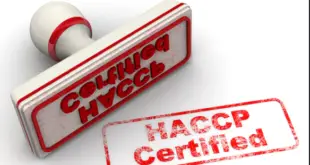Objective: To lay down a procedure for the Management of Documents in the Quality Assurance Department. Scope: Applicable for Document Management system in Quality Assurance department. Responsibility: Quality Assurance Department Accountability: Manager Q.A. is accountable for the compliance of this SOP. Procedure: Storage of Documents in Record Room. Documents shall …
Read More »EXPIRATION DATING AND STABILITY TESTING FOR HUMAN DRUG PRODUCTS
EXPIRATION DATING AND STABILITY TESTING FOR HUMAN DRUG PRODUCTS Each drug product may be a unique article because of, for instance, differences in (1) chemical and physical properties of the active ingredients or the excipients, (2) manufacturing procedures, (3) formulations, (4) containers and closures, (5) proposed storage conditions, and (6) …
Read More »DOCUMENTATION IN PHARMA
DOCUMENTATION IN PHARMA Well-established documentation system exists to implement Good Documentation Practices, which is a part of Quality Assurance. Clearly written documents are prepared, reviewed and controlled, which prevents the errors from verbal communication and permits traceability for all activities carried out. Quality Assurance is responsible for the revision and …
Read More »WHO TRS1019 Appendix 3 – Cleaning validation Principle
WHO TRS1019 Appendix 3 – Cleaning validation Principle Content of Cleaning validation Principle 1.0 Principle 2.0 Scope 3.0 General 4.0 Cleaning validation protocols and reports 4.1 Cleaning validation protocols 4.2 Cleaning validation reports 8.0 Personnel 6.0 Equipment 7.0 Detergents 8.0 Microbiology 9.0 Sampling 9.1 General 9.2 Direct surface sampling (direct …
Read More »PERSONNEL HYGIENE
PURPOSE OF PERSONAL HYGIENE: To lay down the procedure for to ensure for Personnel hygiene of all employees working in the company. SCOPE OF PERSONNEL HYGIENE: This SOP is applicable for all employees working at Pharmaceuticals Company. RESPONSIBILITY OF PERSONNEL HYGIENE Preparation of SOP: HR Executive /Officer Checking and Review …
Read More »Quality Risk Management in Analytical Laboratory
Quality Risk Management in Analytical Laboratory The Quality of the Product Drugs or Drug Product is evaluated in Quality Control analytical laboratories, So It is important to understand that the “services” and “output” of a Quality Control / Analytical Laboratory is directly related to Safety, Identity, Strength, Purity (efficacy), Quality …
Read More »IMPURITIES IN NEW DRUG SUBSTANCES
IMPURITIES IN NEW DRUG SUBSTANCES To provide guidance for registration applications on the content and qualification of impurities in new drug substances produced by chemical syntheses and not previously registered in a region or member state Impurities in new drug substances are addressed from two perspectives: Chemistry Aspects include classification …
Read More »Standard/non-standard processes
Standard/non-standard processes The non-standard process is determined by a combination of the nature of the active substance, the nature of the finished product, the actual process itself, and the production experience of the manufacturer. All biological products are considered to be non-standard. The following categories are examples of products or …
Read More »Process validation scheme
Process validation scheme Traditional process validation Where validation data on production-scale batches are not provided with the application and traditional process validation is proposed, the process validation scheme described below should be submitted by the applicant. This should outline the formal process validation studies to be conducted on production-scale batches …
Read More »Process validation (Continuous process verification) for finished products
Process validation (Continuous process verification) for finished products Process validation can be defined as documented evidence that the process, operated within established parameters can perform effectively and reproducibly to produce a medicinal product meeting its predetermined specifications and quality attributes (ICH Q7). Continuous process verification has been introduced to cover …
Read More »Qualified Person
Qualified Persons A qualified person shall be in possession of a diploma, certificate, or other evidence of formal qualifications awarded on completion of a university course of study, or a course recognized as equivalent by the Member State concerned, extending over a period of at least four years of theoretical …
Read More »DRUG DESIGN (AN OVERVIEW)
DRUG DESIGN (AN OVERVIEW) DRUG DESIGN DRUG DESIGN Approaches to drug discovery: Serendipity (luck) Chemical Modification Screening Rational Irrational, based on serendipity & Intuition Trial & error approach in DRUG DESIGN Time consuming with low through output No de novo design, mostly “Me Too Approach” First generation Rational approach in …
Read More »CHANGE CONTROL
CHANGE CONTROL Change Control is “A formal system by which qualified representatives of appropriate disciplines review proposed or actual changes that might affect the validated status of facilities, systems, equipment or processes. The intent is to determine the need for action that would ensure and document that the system is …
Read More »Quality Management System
Quality Management System Definition: A Quality Management System is a collection of policies, procedures, plans, resources, processes, practices, and the specification of responsibilities and authority of an organization designed to achieve product and service quality levels, customer satisfaction, and company objectives. Documentation: Quality Policy – describes the organization’s approach to …
Read More »HAZARD ANALYSIS OF CRITICAL CONTROL POINT (HACCP)
HAZARD ANALYSIS OF CRITICAL CONTROL POINT (HACCP) TABLE OF CONTENTS HAZARD ANALYSIS OF CRITICAL CONTROL POINT 1. Declaration. Quality Policy Quality Objectives Company Profile Layout of Plant Organization Chart HACCP Introduction HACCP Prerequisite Programs Seven Principles of HACCP Hazards HACCP Scope HACCP Team Responsibility Hazard Analysis Introduction Hazard Analysis for …
Read More »Meanings of terms
Meanings of terms Alcohol: The term “alcohol” without qualification means ethanol (95 percent). Other dilutions of ethanol are indicated by the term “ethanol” or “alcohol” followed by a statement of the percentage by volume of ethanol (CZH60) required. Desiccator: A tightly closed container of suitable size and design that maintains an …
Read More »HACCP VALIDATION REPORT
HACCP VALIDATION REPORT LIST OF CONTENTS S. No. CONTENTS PAGE No. 1.0 Objective 2.0 Scope 3.0 Reason for Validation 4.0 Responsibility 5.0 Procedure for Validation 6.0 Sampling Plan 7.0 Data Recording 8.0 Acceptance Criteria 9.0 Deviations 10.0 Conclusion and Recommendation OBJECTIVE: HACCP validation is the element of verification focused on …
Read More »HPLC Chromatography
HPLC Chromatography (Questions & Answers) HPLC is a chromatographic technique that employs a liquid mobile phase to separate and analyze components of a sample. Unlike traditional liquid chromatography, HPLC utilizes high pressure to force the liquid mobile phase through a packed column, enhancing separation efficiency and speeding up analysis times. …
Read More »Dissolution (Question & Answer)
Dissolution (Question & Answer) 1. Question: What is dissolution? Answer: Dissolution is the time require to release the active drugs substances into liquid form in a dissolution medium under setup conditions (RPM, Time, and Temperature). 2. Question: What is USP chapter No. for Dissolution? Answer: USP chapter No, <711> 3. …
Read More »Interview Questions & Answers (Quality Assurance)
Interview Questions & Answers (Quality Assurance) 1.What is Quality Assurance : Quality Assurance is a deep concept covering all matters that individually or collectively influence the quality of a product. It is the complete & whole of the arrangements made with the object of ensuring that the manufactured products are of …
Read More »


